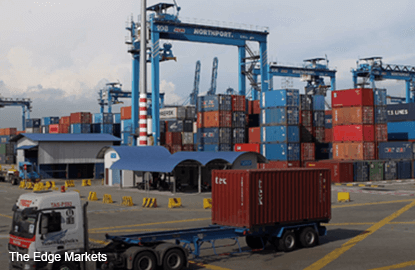
WASHINGTON (March 24): New orders for key US-made capital goods unexpectedly fell in February, but a surge in shipments amid demand for machinery and electrical equipment supported expectations for an acceleration in business investment in the first quarter.
The Commerce Department said on Friday that non-defense capital goods orders excluding aircraft, a closely watched proxy for business spending plans, dipped 0.1% last month after rising 0.1% in January.
Shipments of these so-called core capital goods jumped 1.0% after declining 0.3% in January. Core capital goods shipments are used to calculate equipment spending in the government's gross domestic product measurement.
Economists polled by Reuters had forecast core capital goods orders rising 0.6% last month.
Orders for machinery inched up 0.1% while shipments increased 0.9%. Orders for electrical equipment, appliances and components advanced 2.2%, the biggest increase in seven months, and shipments rose 1.5%.
US financial markets were little moved by the data as investors awaited the outcome of a vote later on Friday on a Republican-sponsored bill to replace Democratic President Barack Obama's 2010 Affordable Care Act. The vote is seen as the first significant policy test for President Donald Trump.
MANUFACTURING RECOVERING
A recovery in oil prices from multi-year lows is driving demand for equipment in the energy sector, helping to lift the manufacturing sector after a prolonged slump.
Manufacturing, which accounts for about 12% of the US economy is also being underpinned by a burst of confidence amid promises by the Trump administration to slash taxes for businesses, boost infrastructure spending and repeal some regulations.
Details of the fiscal stimulus package, however, remain vague, resulting in only a modest increase in business spending on equipment outside the energy sector.
The Federal Reserve last week described business investment as appearing to have "firmed somewhat." Economists expect business spending on equipment to pick up in the first quarter after a 1.9% annualized growth pace in the fourth quarter.
Still, that will likely be insufficient to offset the drag on GDP from slower consumer spending and a wider trade deficit.
The Atlanta Fed is forecasting the economy growing at a 0.9% rate in the first quarter after expanding at a 1.9% pace in the final three months of 2016.
Last month, a 4.3% jump in demand for transportation equipment offset the dip in core capital goods bookings, and hoisted overall orders for durable goods, items ranging from toasters to aircraft that are meant to last three years or more, 1.7%.
Durable goods orders had increased 2.3% in January.
Civilian aircraft orders soared 47.6% in February. Boeing reported on its website that it had received orders for 43 aircraft last month, up from 26 in January.
Orders for motor vehicles and parts fell 0.8% in February, while orders for defense aircraft declined 12.8%. There were increases in orders for primary metals, but orders for fabricated metal products fell as did those for computers and electronic products.
Unfilled orders for core capital goods increased 0.2% last month after rising 0.5% in January. Inventories of overall durable goods rose 0.2% last month.